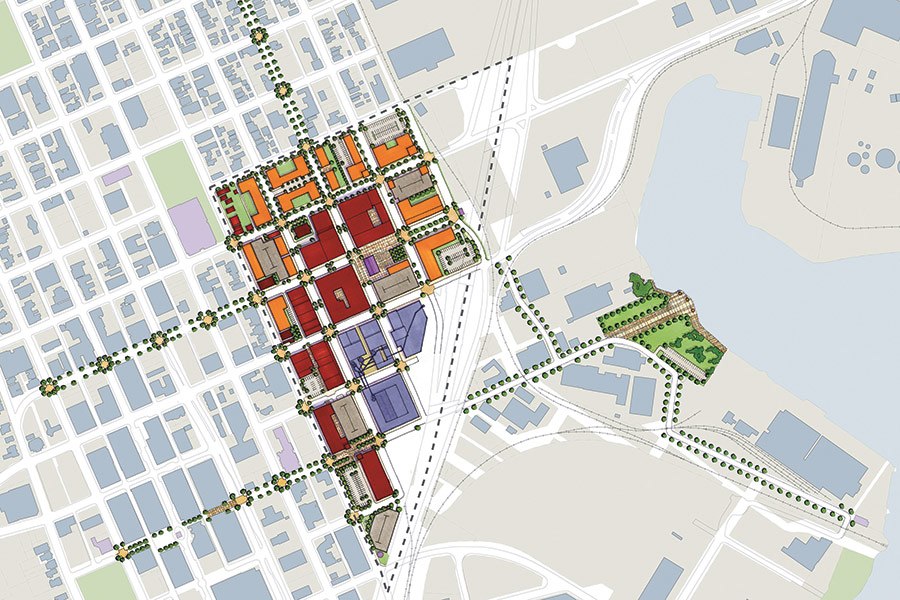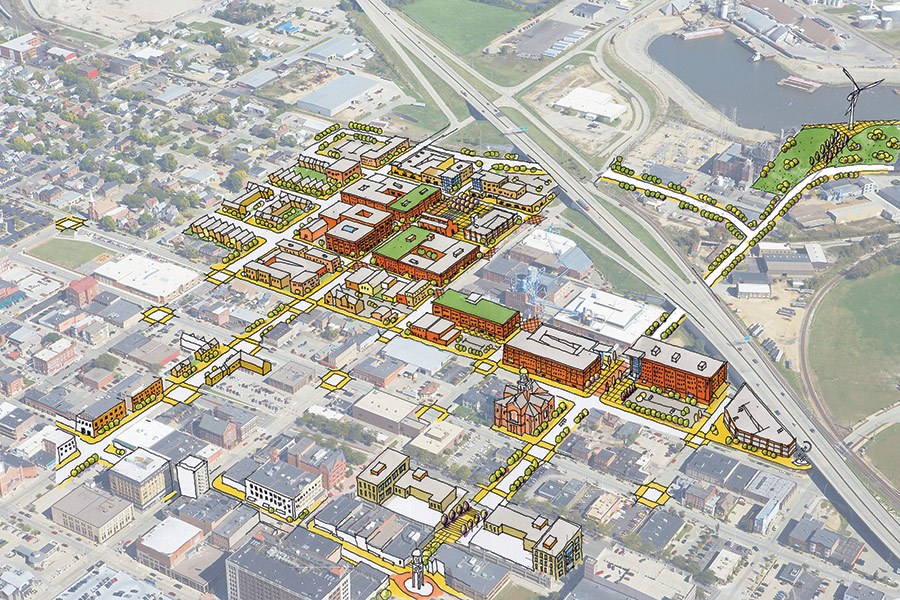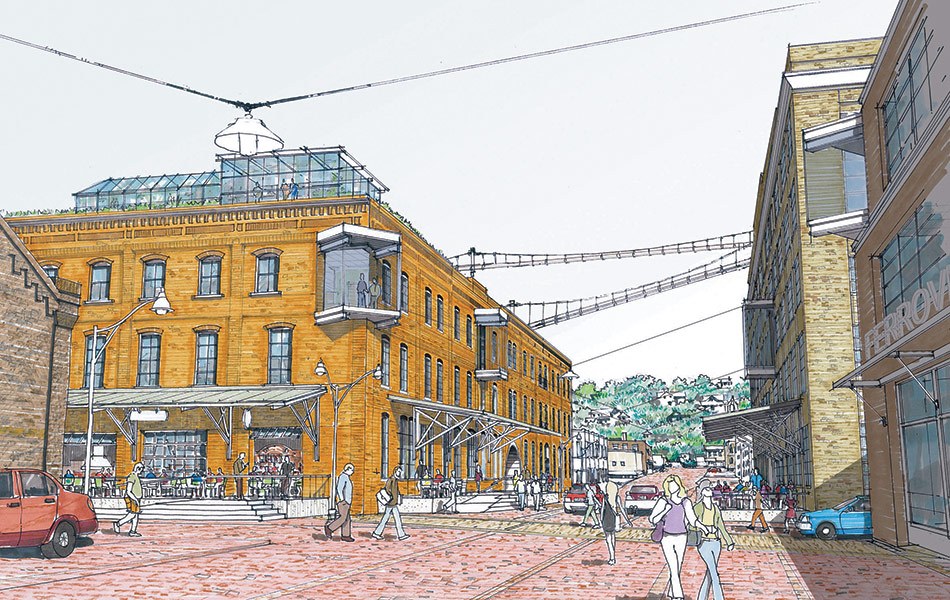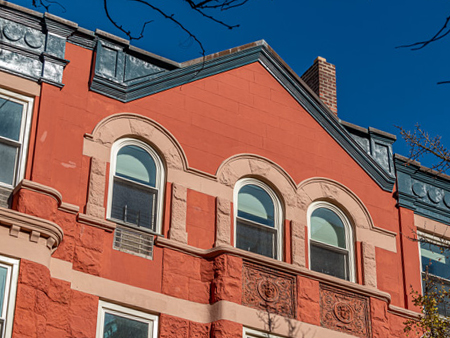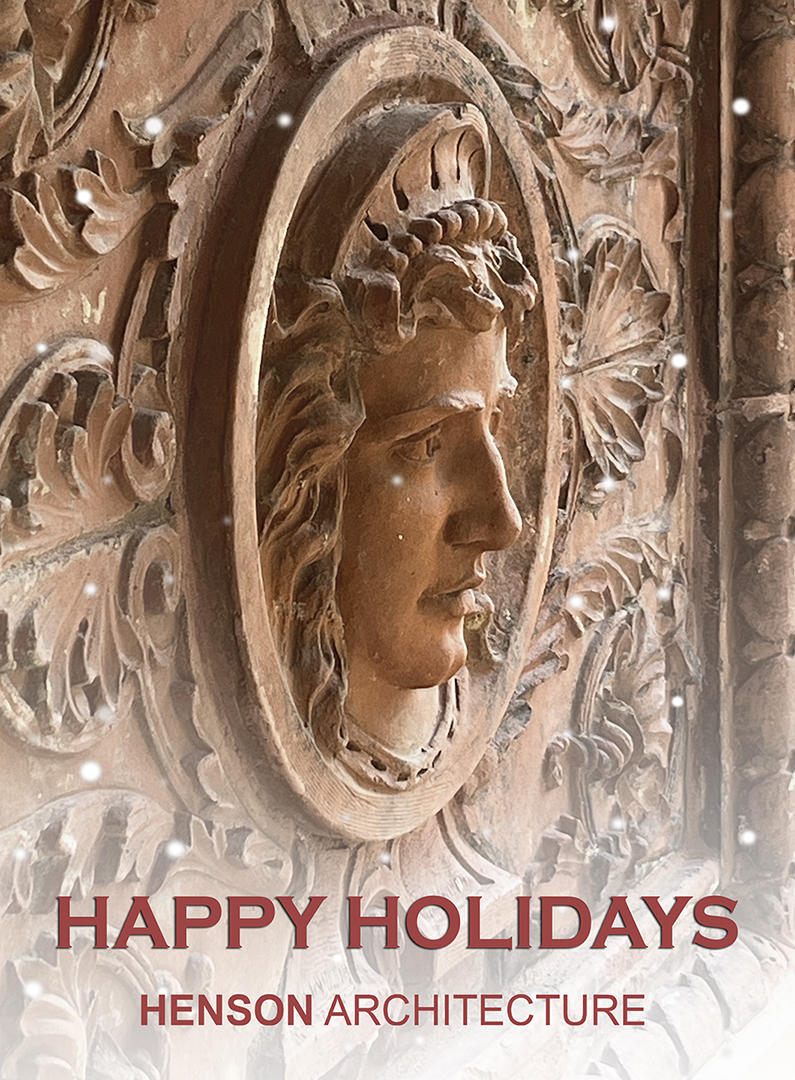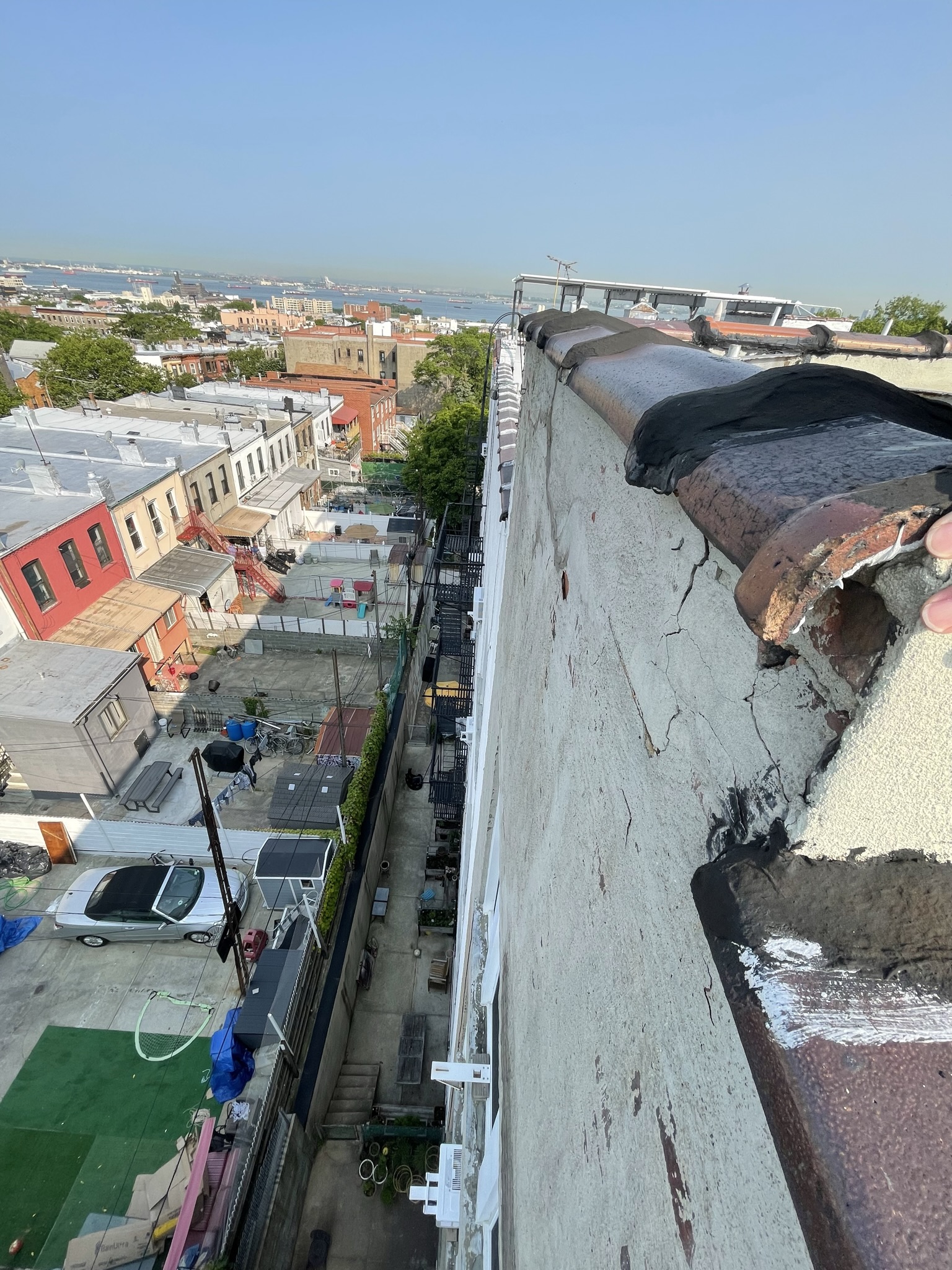Chris Bentley reports for The Architect’s Newspaper: Smooth Finish. Planners mull the revival of a historic millwork district on the Mississippi.
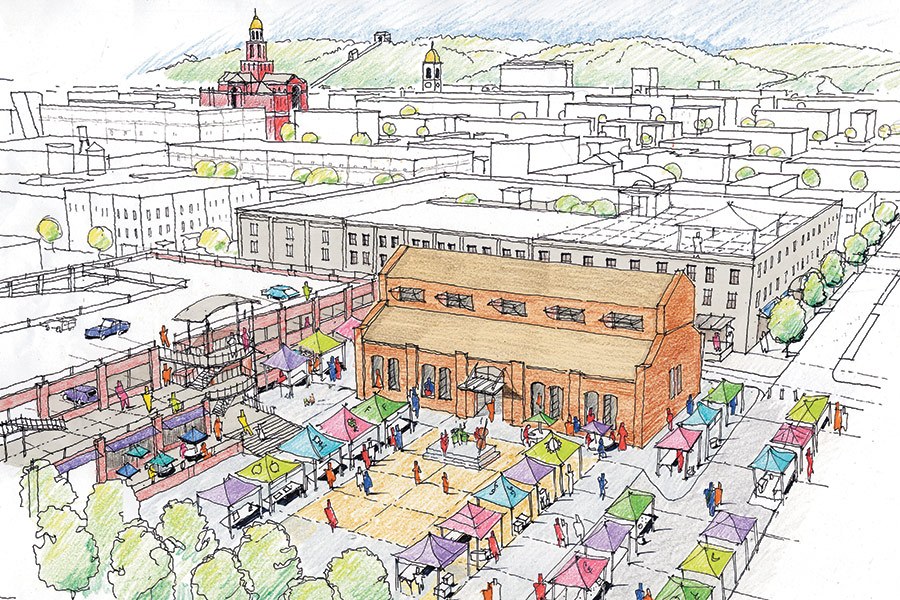
For much of its modern history, Dubuque, Iowa, has been a city that could not catch a break. The millwork industry that built it moved elsewhere in the early 20th century, and later the Interstate Highway System passed it by, too, building I-90 to the north through Madison, Wisconsin, and I-80 to the south through the Quad Cities.
Dubuque languished, enduring about 9 percent unemployment throughout the entire 1980s. Since then local officials have embarked on a series of public-private partnerships to revive the Mississippi River town piece by piece. Their latest effort takes aim at the heart of Dubuque’s industrial past: its rustic downtown millworking district. Once the largest millworking district in the U.S., these 28 buildings across 17 city blocks sat largely vacant for decades.
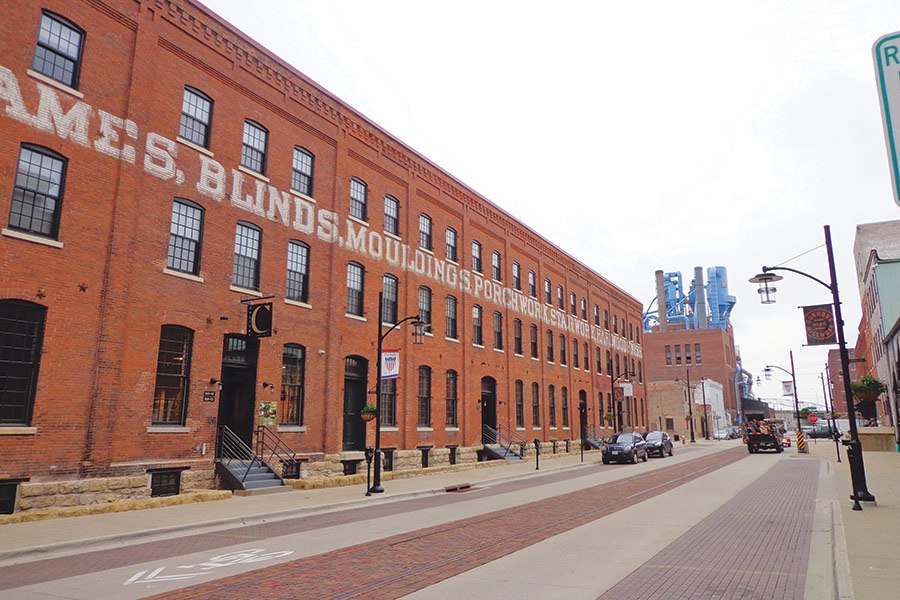 |
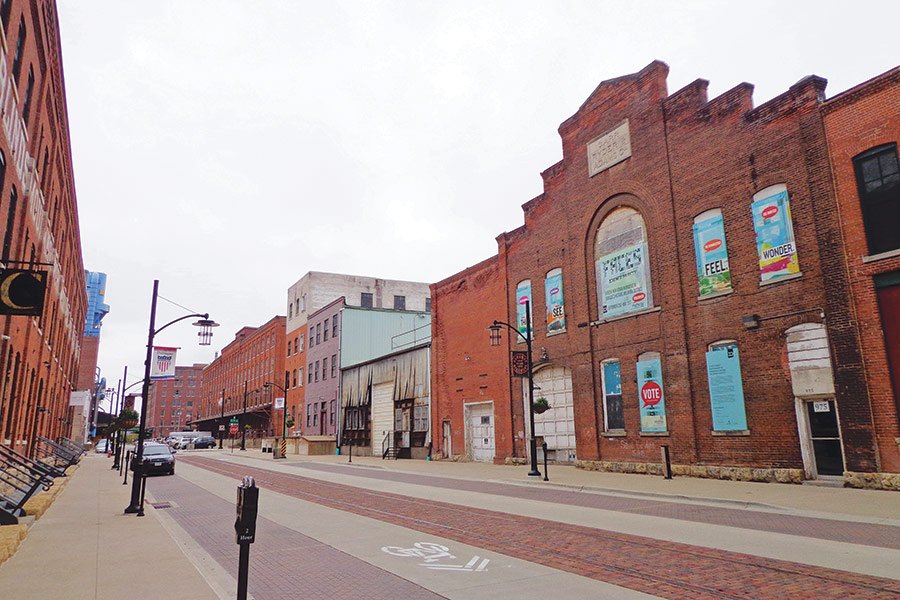 |
Thousands of employees used to make the trek from the nearby residential neighborhood of Washington to work in dozens of mills and other businesses. That may not happen again, but Andrew Dresdner, a Cuningham Group urban design associate, said Dubuque could forge a new identity without turning its back on the past. Cuningham’s master plan for the Millwork District recently won the Environmental Protection Agency’s National Award for Smart Growth Achievement—a vote of confidence in an ongoing plan that has so far created 150 units of housing, 15,000 square feet of retail and restaurant space, a 200-car parking garage, and substantial improvements to area streets. The National Trust for Historic Preservation has named it a Green Lab pilot project.
The plan hopes to rehabilitate 1 million square feet of formerly vacant warehouse space, brining 1,000 new residents to the area. Those that have already come inhabit the Caradco Building, a three-story warehouse from the late 19th century. The namesake company is defunct, but the brick building remains, its inner courtyard turned into green space for residents of the city block-sized structure. “When you walk down the street there’s this glimmer of life from the courtyards through these huge, gracious arches,” said Dresdner. The master plan envisions similar transformations for other warehouses, with food co-ops, art galleries, and a solar energy company already moving in nearby.
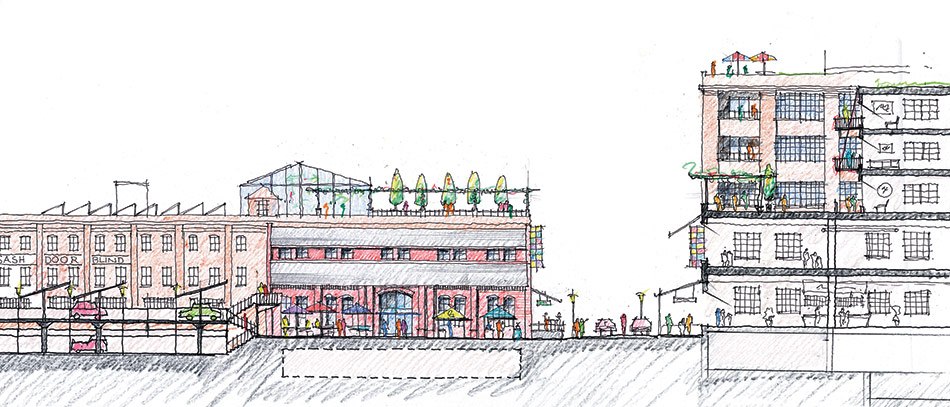 |
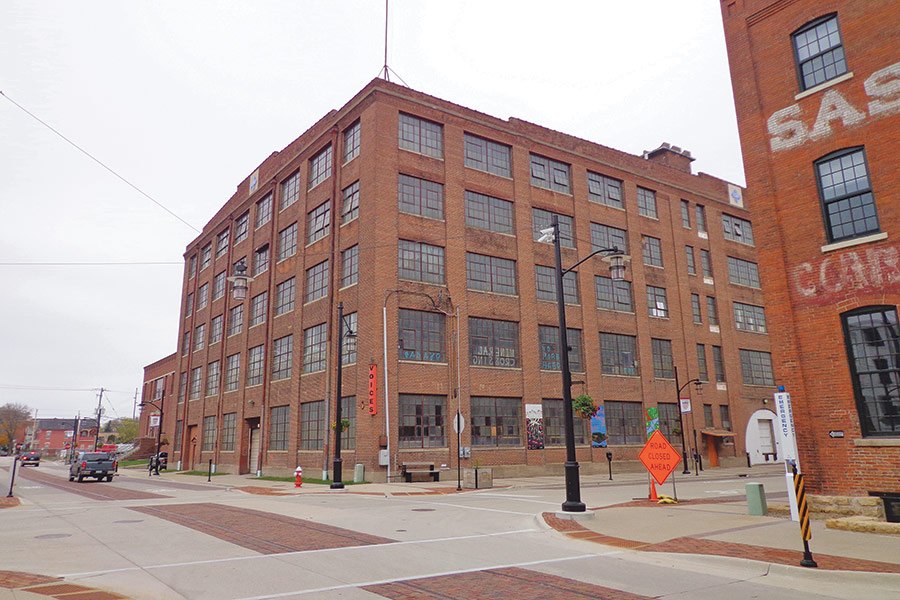 |
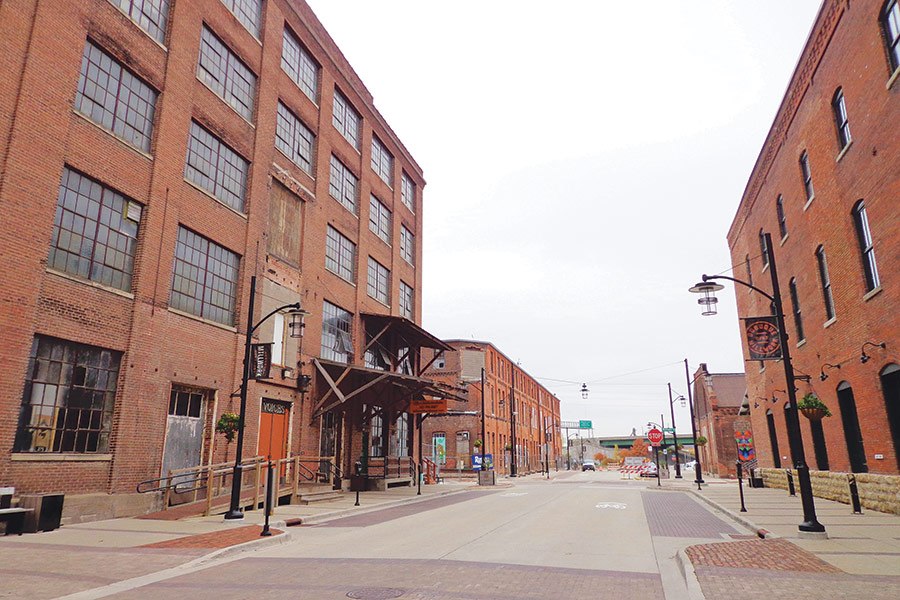 |
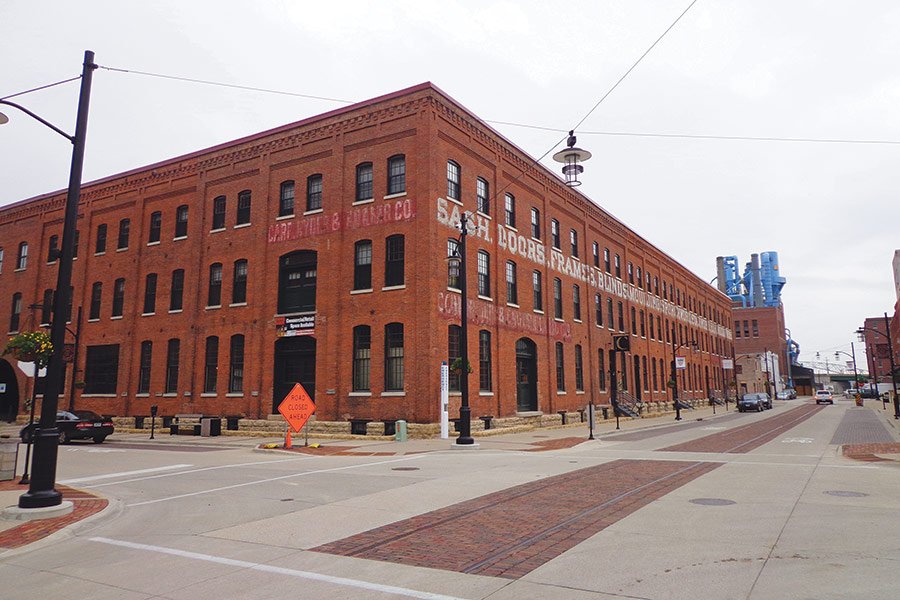 |
The city worked with existing property owners to redevelop the area as a unit, opting to landmark the district so it could score historic tax credits. They also landed an EPA Brownfields grant to daylight the underground Bee Branch Creek, which Dubuque buried after a fatal flash flood in 1858. Along with permeable pavement in the alleys and a bevy of “complete streets” improvements to the Millwork District’s urban grid, the newly exposed creek should help reduce damage to the flood-prone Washington neighborhood, too.
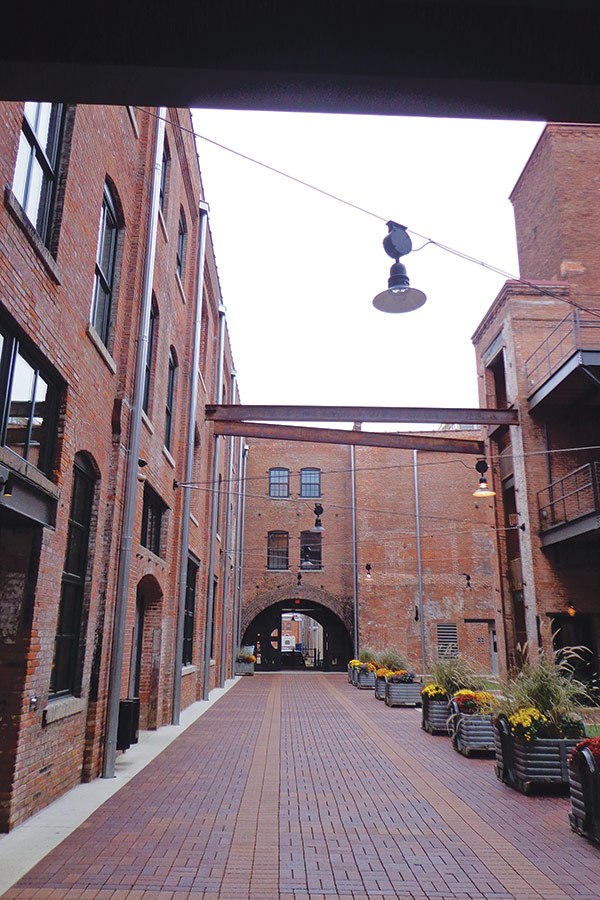 |
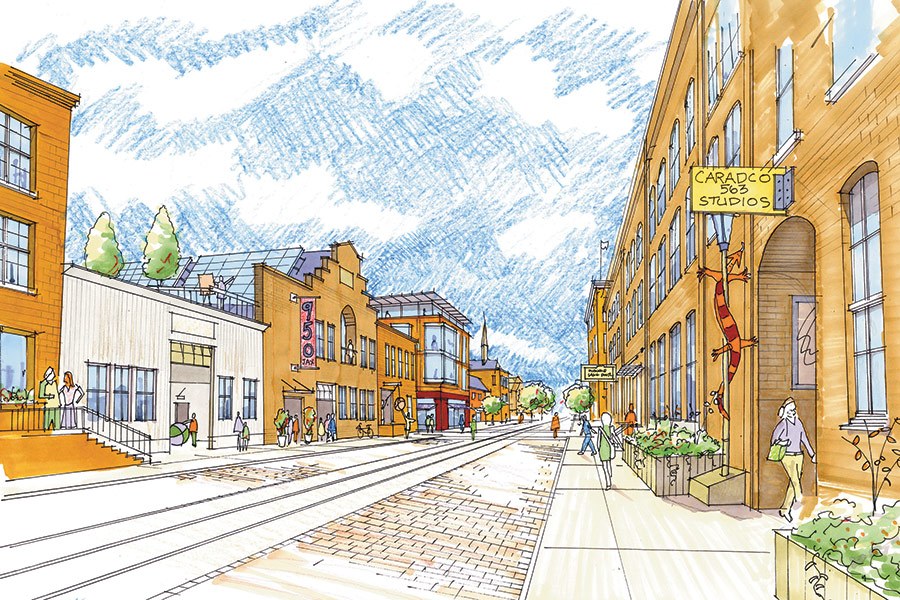 |
“It’s going to reintroduce green space into some of our most historic neighborhoods,” said Assistant City Manger Teri Goodman in the EPA video. The plan calls for a public plaza in the heart of the district and improved pedestrian connections to surrounding neighborhoods. For those traveling from farther away, Amtrak is looking to build a new multi-modal rail stop in the area, connecting the Millwork District to Chicago via the old Black Hawk line. Work is supposed to begin this year, but may be delayed while the Illinois Department of Transportation and Canadian National Railway negotiate track improvements.
However they arrive, visitors will find a different Dubuque than the one passed over by the highway system in the 1950s. “I can remember sitting at the council table in the 1990s. The comment was made that people will never live downtown in the city of Dubuque,” Mayor Roy Buol said in an EPA video touting the district’s redevelopment. “I think as a community we showed that if you can develop the infrastructure, take your historic buildings and rehab those so it’s a welcoming space, you can attract people downtown to live.”
